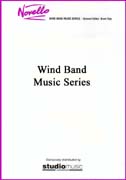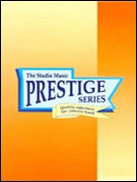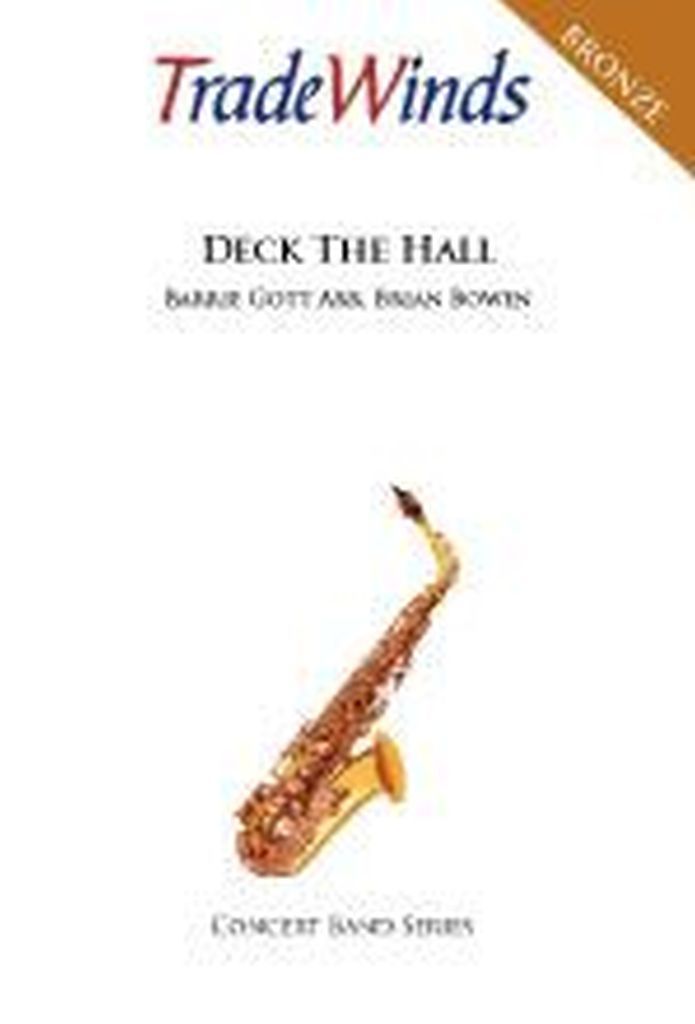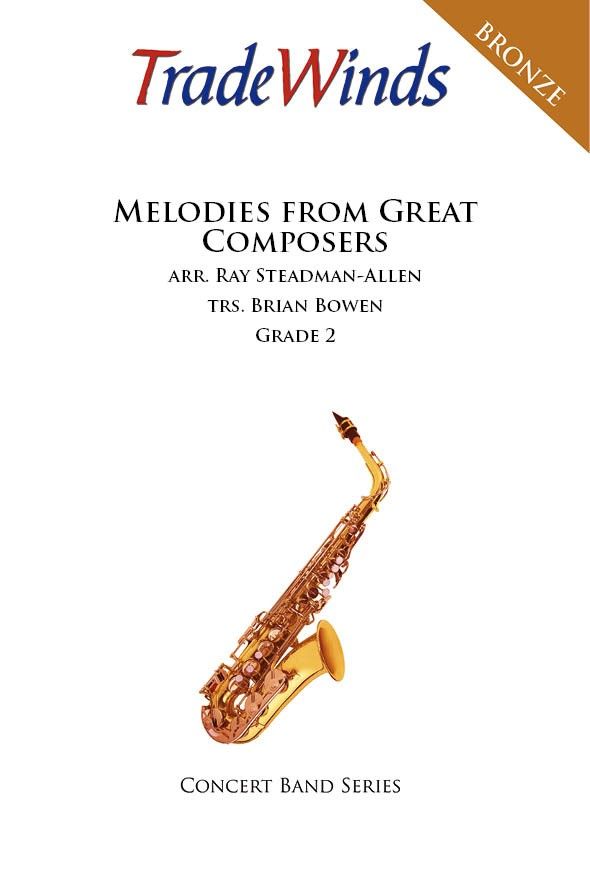Results
-
 £189.95
£189.95PLAIN MAN'S HAMMER, A (Novello Symphonic) - Dalby, Martin
Score & Parts. The whole shape of A Plain Man's Hammer owes something to classical sonata form. It is a two part form of which the first is an exposition containing two tonally contrasted subjects and the second contains a development section where harmonies move rapidly towards a recapitulation of the two original subjects, this time the contrast being reconciled in the home key. The first large section of A Plain Man's Hammer is an exposition containing two main ideas and other material associated with them. Development is replaced by a parade of incomplete parodies: a waltz almost in the style of Chopin; a sort of Tango; a Mahlerian march; something close to Janacek; a cheap imitation of a Flamenco; a corruption of Oranges and Lemons; a pop song; a military march which gets somewhat out of hand; a Viennese Waltz to set your feet tripping, and an even cheaper imitation of a Flamenco. At the end of the work the associated material of the opening reappears in maturity; the major ideas play a subservient role, reappearing only in the final coda. Duration: 14 mins.
Estimated dispatch 7-14 working days
-
 £32.95
£32.95SPIRIT OF THE DANCE (Prestige Concert Band Extra Score) - Wiffin, Rob
Extra Score. This piece encapsulates the elements that urge us all to move our bodies and dance to the rhythms of music. The three movements (Stomping Dance; Waltz Interlude; Duende) allow the exploration of a basic and lively stomping dance, a beautifully elegant and poised waltz and a lively flamenco. Wiffin enables the listener to get feet tapping throughout this wonderfully energetic work. Recorded on Polyphonic QPRM157D Spirit of the Dance. Duration 12'30"
Estimated dispatch 7-14 working days
-
 £164.95
£164.95SPIRIT OF THE DANCE (Prestige Concert Band Set) - Wiffin, Rob
Score and Parts. This piece encapsulates the elements that urge us all to move our bodies and dance to the rhythms of music. The three movements (Stomping Dance; Waltz Interlude; Duende) allow the exploration of a basic and lively stomping dance, a beautifully elegant and poised waltz and a lively flamenco. Wiffin enables the listener to get feet tapping throughout this wonderfully energetic work. Recorded on Polyphonic QPRM157D Spirit of the Dance. Duration 12'30"
Estimated dispatch 7-14 working days
-
£34.95
Melodies from Great Composers
Ray Steadman-Allen has selected 4 melodies, composed by some of the great composers, and linked them together to form a medley that will appeal to many a listener. 'Soldier's March' by Schumann, Haydn's 'Aria', 'Waltz No. 3' by Schubert and the exciting theme from 'William Tell' by Rossini have all been featured to make both a interesting and educational medley for young bands.
Estimated dispatch 7-14 working days
-
£5.99
Praise!
1Where Eagles SingPaul Lovatt-CooperThe Band of the Welsh Guards supported by The Band of the Life Guards4.322Swingtime ReligionBarrie GottThe Band of the Welsh Guards supported by The Band of the Life Guards3.583ShenandoahLeonard Ballantine arr. Brian BowenThe Band of the Welsh Guards supported by The Band of the Life Guards2.534Deep RiverWilliam BroughtonThe Band of the Welsh Guards supported by The Band of the Life Guards3.535CommitmentStephen BullaThe Band of the Welsh Guards supported by The Band of the Life Guards3.576Christmas JoyErik Leidz?n trs. Brian BowenThe Band of the Welsh Guards supported by The Band of the Life Guards2.197A Carol FantasyEric Ball trs. Stephen BullaThe Band of the Welsh Guards supported by The Band of the Life Guards6.108Angel TrumpetsRichard PhillipsThe Band of the Welsh Guards supported by The Band of the Life Guards3.499Yuletide RagRichard PhillipsThe Band of the Welsh Guards supported by The Band of the Life Guards2.3610Opening CeremonyRichard PhillipsThe Band of the Welsh Guards supported by The Band of the Life Guards4.2811Dance Like DavidAndrew MackerethThe Band of the Welsh Guards supported by The Band of the Life Guards3.0512Waltz in A FlatJohannes Brahms arr. Brian BowenThe Band of the Welsh Guards supported by The Band of the Life Guards1.3913DanielBarrie GottThe Band of the Welsh Guards supported by The Band of the Life Guards2.2614I Vow to Thee, My CountryGustav Holst arr. Ray Steadman Allen trs. Brian BowenThe Band of the Welsh Guards supported by The Band of the Life Guards3.2915PraiseWilfred Heaton trs. Brian BowenThe Band of the Welsh Guards supported by The Band of the Life Guards3.10
Estimated dispatch 7-14 working days
-
£13.95
Spirit of the Dance
1Their Finest HourNigel ClarkeRoyal Northern College of Music Wind Orchestra5.002A Norfolk RhapsodyMartin EllerbyRoyal Northern College of Music Wind Orchestra10.113Looking InTom DavorenRoyal Northern College of Music Wind Orchestra10.054-6Cinnamon ConcertoMartin EllerbyRob Buckland (Alto Saxophone) with Royal Northern College of Music Wind Orchestra I. The Fast Lane 5.57 II. The Night hawks 8.23 III. The Razzle Dazzle! 3.467Harlech VariantsDuncan StubbsRoyal Northern College of Music Wind Orchestra9.398-10Spirit of the DanceRob WiffinRoyal Northern College of Music Wind Orchestra I. Stomping Dance 4.29 II. Waltz Interlude 3.54 III. Duende 4.09
Estimated dispatch 7-14 working days
-
£83.00
Quando m'en vo (CB) - Giacomo Puccini - Bert Van Thienen
Aria for soprano voice and concert band from the opera La Bohme by Giacomo Puccini (1858-1924). Also known as Muzetta's Waltz.
Estimated dispatch 7-14 working days
-
 £54.95
£54.95Deck The Hall
An attractive setting by Barrie Gott, mixing 2/2 time signatures with 'waltz like' 3/4. Cleverly done, and a real crowd pleaser.
Estimated dispatch 7-14 working days
-
 £34.95
£34.95Melodies from Great Composers
Duration: 5:00Series: TradeWindsGrade/Difficulty: 60Arranger: Ray Steadman-AllenTranscriber: Brian BowenRay Steadman-Allen has selected 4 melodies, composed by some of the great composers, and linked them together to form a medley that will appeal to many a listener. Soldiers March by Schumann, Haydns Aria, Waltz No. 3 by Schubert and the exciting theme from William Tell by Rossini have all been featured to make both a interesting and educational medley for young bands.
Estimated dispatch 7-14 working days
-
 £7.00
£7.00Philharmonic Phun Phest - Offenbach
This is a clever medley of classical favorites that kicks off with a grandiose setting of the opening of Bach's Toccata and Fugue in D Minor, continues with excerpts from Johann Strauss' beloved Blue Danube Waltz and the opening theme of Mozart's Eine Kleine Nachtmusik and concludes with the rollicking Can-Can from Gait Parisienne. A light-hearted medley that is a delight to experience and a perfect way to introduce these classic pieces to young performers. Duration: 2'20" Key: Bb Ranges: Trumpet - D; Horn - D; Trombone - C
Estimated dispatch 12-14 working days
